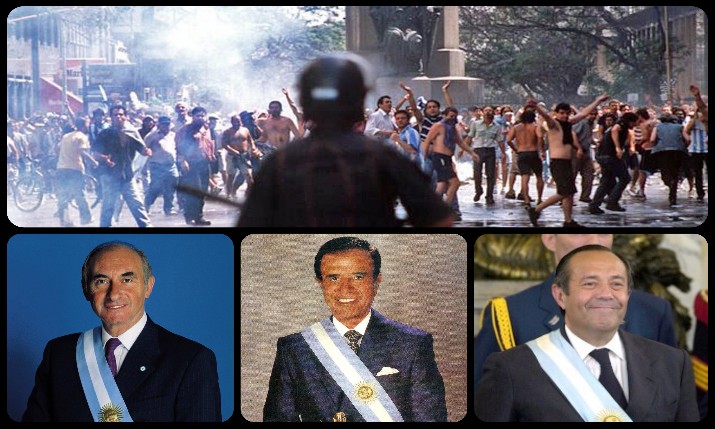In this article, we will provide a comprehensive account of the events that resulted in five consecutive government changes in Argentina within just two weeks in 2001.
Argentina, a South American country, had amassed a debt of millions of dollars and the International Monetary Fund (IMF) had ceased providing financial assistance. Additionally, a limit was imposed on bank withdrawals, causing businesses to come to a standstill. These factors, along with growing political and economic instability, led the citizens of Argentina to take to the streets in protest. The riots began in December 2001 and peaked on the 19th and 20th of the month in Buenos Aires, the capital city of Argentina, as well as other large cities within the country. The v*olent protests continued despite the dramatic change in the presidency, which saw five presidents assume power within 12 days.
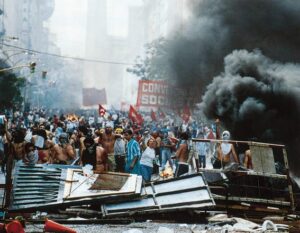
The December 2001 crisis in Argentina became known as the Argentinazo. Revolting groups initiated the protests against the incumbent government, demanding that “all of them must go”. This led to the resignation of President Fernando De La Rua. However, his resignation further worsened the crisis and brought about a period of intense political turmoil in the country, which in turn had a negative impact on the economy and social stability. This period of economic and social decline, which began in 1998 and lasted for about four years until 2002, is known as The Argentine Great Depression.
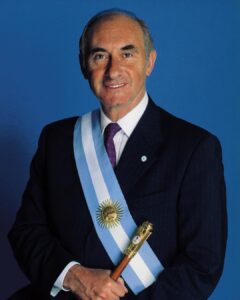
Cc: Wikipedia
The riots escalated soon after Argentina had implemented an economic law called “corralito policies” in an attempt to implement an economic law called “corralito policies” people’s access to their own money, and bank withdrawals were prohibited. By December 19, 2001, the riots had reached their climax and the president was compelled to declare a state of emergency. The following day, he resigned from his position, leaving the country without a leader and exacerbating the already dire situation.
What triggered the Argentine December 2001 Crisis? In the 1999 presidential elections, Fernando de la Rua, a member of the Alliance for Work, Justice, and Education party, was elected as the President of Argentina. At the time of his election, the country was in the midst of an economic recession that had been triggered by a policy introduced in 1991, known as the Convertibility Plan. The policy aimed to peg the value of the Argentine peso to that of the US dollar and was introduced by the previous president, Carlos Menem. Initially, the plan had some success in reducing the inflation rate, but in the six years that followed, the economy continued to decline. This economic downturn persisted, and by 2001, it had reached crisis proportions, leading to the December 2001 Crisis in Argentina.
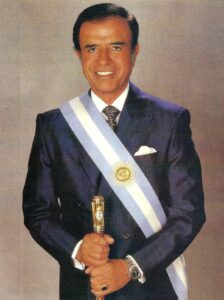
Cc: Wikipedia
In order to maintain the Convertibility Plan, the Argentine government required a significant amount of US dollars to successfully convert into pesos and keep the economy functioning. The supply of dollars was made possible by privatizing nearly all of the country’s industries and pension funds. However, after the privatization, the economy could not keep up with the demands, and the country began to rely on loans from the International Monetary Fund to service its debts and keep the economy running. Amidst this looming debt crisis, the 1999 presidential elections were held, and Fernando De La Rua emerged as the winner. He had won largely due to his campaign promises of maintaining the Convertibility Plan. During his campaign, a popular phrase was “With me, one peso, one dollar,” which resonated with the people, leading to his victory.
The ruling party, the Alliance Party, faced difficulties in governing due to an uneven distribution of its members across provinces, with the Peronists still in control of notable districts, including the capital, Buenos Aires. The first year of the new administration was marked by conflicts and corruption allegations, with the Secretaría de Inteligencia (SIDE), the country’s intelligence service, being implicated in paying off senators to approve a Labor Reform Act. The situation was complicated by the fact that the head of the service, Fernando de Santibañes, was a close friend of President De La Rua. Vice President Carlos Alvarez added to the mess by resigning in October 2000, accusing President De La Rua of supporting corrupt practices.
The Argentine government tried to rescue its struggling economy by launching two campaigns on debt expansion and refinancing under the supervision of the International Monetary Fund. The campaigns, known as “the armoring” and “the mega exchange,” were initiated after the economy minister resigned and were aimed at maintaining the Convertibility Plan. However, speculation of corruption soon arose, and the campaigns failed to deliver, resulting in the country’s enormous debt increasing even more. In an attempt to remedy the situation, the government enforced economic laws called “corral policies,” which prevented people from accessing their money, leading to intense protests and riots. The president declared a state of emergency, but the situation continued to worsen, eventually leading to his resignation and a period of political and economic unrest that lasted for about four years, known as the Argentine Great Depression.
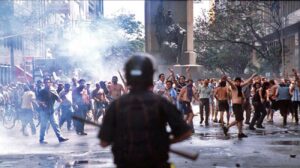
As the political and economic turmoil worsened, public unrest continued to escalate. In the political sphere, the Peronist party appointed one of its senators as President Pro-Tempore of the Argentine Senate. This position made the senator next in line for the presidency after the vice president. However, since President De La Rua had no vice president, a senator from the opposing party was next in line for the presidency. With few members of his party in key positions, his political influence weakened. By March 2001, the situation had dramatically worsened, and the unemployed had begun setting up blockades on highways to demand financial support and welfare services. The unrest persisted for months until it reached a boiling point on November 29, 2001.
As fears of an economic collapse grew, investors started to withdraw their funds and capital from banks, and the International Monetary Fund refused to finance the country’s debt. This led to a complete breakdown of the banking system and the Argentine economy. In December, the government announced a cash withdrawal limit of $250 per week, which caused long queues and delays in banks. This arrangement negatively impacted businesses and fueled growing unrest. The unrest culminated in violent riots that rocked the country and resulted in the deaths of over 30 people, including children.

De La Rua’s administration faced severe criticism as the country’s major labor unions, the General Confederation of Labor and the Argentine Workers’ Central Union, went on strike to protest his economic policies. The strike had a significant impact on the country, as different sectors joined in and led to riots in different cities. During the riots, there were instances of looting and truck robberies, resulting in several deaths. The country was in a state of chaos. The crisis reached its peak on December 19, 2001, with riots and looting going on for hours. The looting was believed to have been instigated by the government’s major opposing party, the Peronists, as it was more pronounced in areas and districts controlled by the opposition. The government had to find ways to restore order and calm as the situation was getting close to a state of anarchy.
President De La Rua’s first attempt to quell the crisis was to involve the military, but this idea was quickly rejected as it was deemed unconstitutional for the military to intervene in domestic issues except for providing support to the police and other civil forces. Besides, any military involvement would require approval from the Congress, where the opposing party had a significant presence, making it impossible to pass. The President’s next plan was to declare a national state of emergency and deploy the police force and other security agents such as border and coast guards to restore order. He also invited the Peronists party to join the government to form a “government of national unity” aimed at calming the country. The day ended with the resignation of the finance minister, Domingo Cavallo.
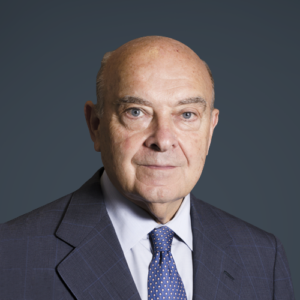
Cc: GlobalSource Partners
The riots persisted into the following day, December 20, 2001. The government attempted to distribute food to the public but the ministry of social development refused to participate. Police had been deployed to quell the chaos but were struggling as the unrest continued to escalate. The government attempted to censor the media to contain the spread of information, but even the president’s own media staff refused to comply. Violent confrontations between protesters and law enforcement agencies erupted in various parts of the country. In a last-ditch effort, President De La Rua addressed the nation and again offered the Peronist party a place in his government to restore peace. However, after lengthy deliberation, the opposing party turned down the offer. This was the final straw for President Fernando De La Rua, who resigned from office on December 21, 2001.
The protests that took place at the government house, the Plaza de Mayo, resulted in a tragedy with hundreds of people injured and 27 deaths. The area was too dangerous for De La Rua to leave by road, so an air force helicopter was sent to extract him. His exit was broadcasted on national TV and mocked by the public. However, his resignation eventually calmed the protests. Following the constitution, Senator Ramón Puerta assumed office as the President Pro-Tempore on December 21, 2001, until a new president was elected. The race for the next president started immediately, with three top contenders being governors of large provinces. Unexpectedly, the congress decided to install Adolfo Rodríguez Saá, the governor of a smaller province, as the president on December 23, 2001, but this was only a temporary solution.
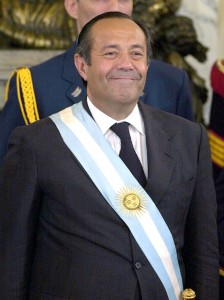
Cc: Wikipedia
However, the political turmoil in Argentina continued with the appointment of Eduardo Camaño as the next interim president. His appointment did little to quell the unrest in the country as protests and riots persisted. As a result, the legislative assembly appointed Senator Eduardo Duhalde as the next president on January 2, 2002. Duhalde immediately initiated economic and political reforms to stabilize the country, including devaluing the currency and restructuring the government. His policies helped to restore stability to the country, and he was able to successfully serve out his term until 2003, when he handed over power to the newly elected president, Nestor Kirchner.
It is worth noting that the succession of presidents in Argentina did not end with Eduardo Duhalde’s election. He served as president until 2003 when he was succeeded by Néstor Kirchner, who won the presidential election that year. However, the period of rapid turnover in presidential office known as the “December 2001 crisis” did come to a close with Duhalde’s appointment. The crisis began on December 21, 2001, when President Fernando De La Rua resigned from office. He was followed by Ramon Puerta, who served as President Pro-Tempore for two days, and Adolfo Rodríguez Saá, who was in office for seven days. Eduardo Camaño then took over for two days before Eduardo Duhalde was elected as president and served for one year, four months, and 23 days. This period of time saw an unprecedented five presidents in 12 days. Ironically, Duhalde had come in second to De La Rua in the previous presidential election. His term in office lasted until 2003 when he was succeeded by Néstor Kirchner.
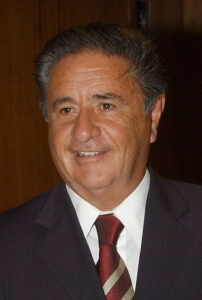
Cc: Wikipedia
Argentina’s economy struggled for several years due to failed economic policies and a rise in inflation and unemployment rates. Despite the challenge, Duhalde was able to temporarily stabilize the economy before he handed over to the next president, Néstor Kirchner. The country’s Minister of Economy, Roberto Lavagna, played a significant role in managing the economic crisis. The strict measures taken to restore the country’s economy will be long remembered, just as the bizarre tale of how Argentina had five presidents in just 12 days will always be recounted.
